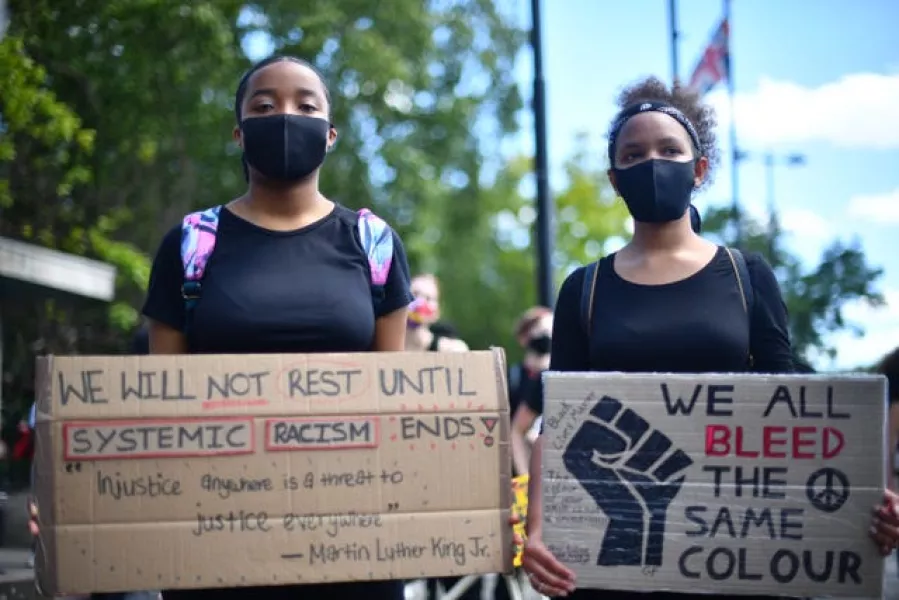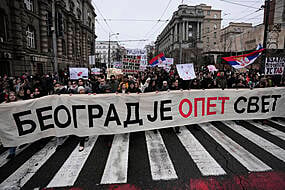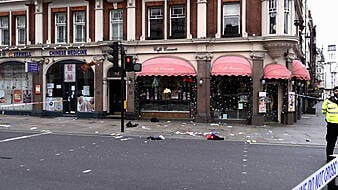A forensic scientist has given evidence at the federal trial of three former police officers accused of violating George Floyd’s civil rights – and discussed drugs found in the back of the police car they tried to put him in before restraining him on the pavement.
McKenzie Anderson, from the Minnesota Bureau of Criminal Apprehension, oversaw the processing of the car, which was outside the shop where Mr Floyd allegedly tried to use a counterfeit $20 bill.
Under questioning from defence lawyers, Ms Anderson said pills and pill fragments recovered from the car months after an initial search had tested positive for methamphetamine.
A pill also tested positive for Mr Floyd’s DNA, the court was told.
Ms Anderson was testifying at the trial of ex-officers J. Alexander Kueng, Thomas Lane, and Tou Thao, who are accused of depriving Mr Floyd, 46, of his civil rights by failing to give him first aid while he was handcuffed, face down, with officer Derek Chauvin’s knee pressed on his back.

Kueng and Thao are also accused of failing to intervene in the killing, which triggered protests worldwide and a re-examination of racism and policing.
Drug use did not cause Mr Floyd’s death, a toxicologist told the court on Wednesday.
On Thursday, Ms Anderson said investigators first searched the police car, as well as the Mercedes SUV Mr Floyd was driving, on May 27 2020, two days after his death.
They did not take pills or fragments from the Mercedes and have them tested until December 9 2020, she said, adding that, initially, she did not know for sure they were pills.
They tested positive for fentanyl and methamphetamine, the court was told.
The bureau conducted a second search of the police car on January 27 2021.
Ms Anderson told Lane’s lawyer, Earl Gray, only the three biggest items were tested.

Mr Gray asked whether Mr Floyd was “chewing up the pills or spitting them out”.
Ms Anderson responded: “I can’t say how it got there.”
Under cross-examination from Thao’s attorney Robert Paule, Ms Anderson acknowledged that the search warrant for the Mercedes, signed by a judge the day after Mr Floyd’s death, specifically authorised investigators to look for and collect narcotics.
Ms Anderson said the authorisation commonly appears on search warrants and it did not occur to her at the time that the pills she saw there were narcotics.
She said she had not been specifically instructed to look for drugs in either vehicle.
She said they could have been mints or gum and she left them in place.
“There are many things on a search warrant that don’t get collected. That’s very common,” she said.
Dr Vik Bebarta, an emergency doctor and toxicologist and professor at the University of Colorado in Denver, gave evidence on Wednesday and said Mr Floyd did not die from the low levels of fentanyl and methamphetamine in his system.
He said that, on a video filmed inside a shop before his fatal encounter with police, Mr Floyd did not appear to be seriously intoxicated or experiencing an overdose.
He did not dispute a shop worker’s evidence that Mr Floyd seemed high.
“He was awake, walking, communicating, walking quickly at times,” Mr Bebarta said.
Mr Bebarta said he concluded that Mr Floyd “died from a lack of oxygen to his brain” and that he had suffocated because his airway had been closed off.

That was consistent with evidence on Monday from a lung specialist, who said Mr Floyd could have been saved if officers had moved him into a position to breathe more easily.
Chauvin – the most senior officer at the scene – told his colleagues to wait for an on route ambulance after Mr Floyd became unresponsive and they could not find a pulse, the court was previously told.
Officers kept restraining Mr Floyd until the ambulance arrived, the court was also told.
Kueng, who is black; Lane, who is white; and Thao, who is Hmong American are charged with wilfully depriving Mr Floyd of his constitutional rights while acting under government authority.
Their actions resulted in Mr Floyd’s death, the charges allege.
Chauvin, who is white, was convicted of murder and manslaughter last year and sentenced to 22-and-a-half years in prison.
He pleaded guilty in December to a federal civil rights charge.
Lane, Kueng and Thao also face a separate state trial in June on charges alleging that they aided and abetted murder and manslaughter.







